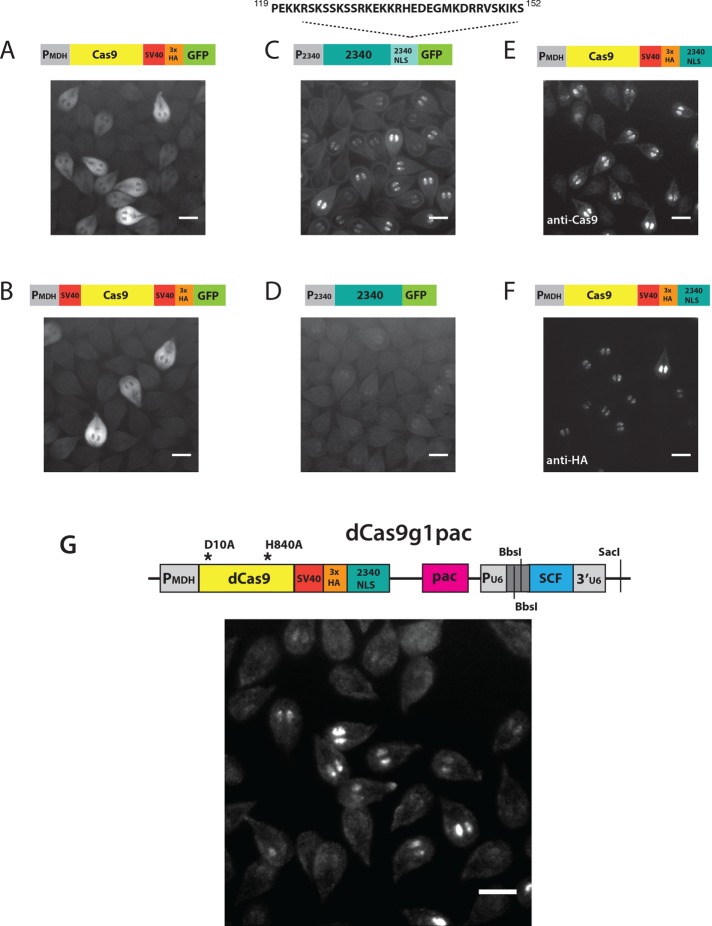FIGURE 1:
A Giardia-specific NLS is necessary and sufficient to localize Cas9 and dCas9 to both nuclei. C-terminal GFP-tagged Cas9 with either a single C-terminal SV40 NLS (A) or dual N- and C-terminal SV40 NLSs (B) localizes only to the cytoplasm. The presence of a Giardia-specific native 34–amino acid C-terminal NLS from the Giardia protein GL50803_2340 (2340NLS) is necessary for the localization of 2340GFP to both nuclei (C, D). The C-terminal addition of the 2340NLS to Cas9 is sufficient for localization to both nuclei, as shown by immunostaining with anti-Cas9 (E) or anti-HA (F). A schematic of the Giardia CRISPRi vector dCas9g1pac and the localization of dCas9 as determined by anti-Cas9 antibody staining are shown in G. The vector includes catalytically inactive dCas9 with a C-terminal 2340NLS and a 3XHA epitope tag driven by the Giardia malate dehydrogenase promoter (PMDH) and a puromycin resistance marker (pac) for positive selection in Giardia. The gRNA cassette is expressed using the Giardia U6 spliceosomal RNA pol III promoter and includes inverted BbsI restriction sites for rapid cloning of specific gRNA target sequences, followed by the gRNA scaffold sequence (SCF). Additional gRNA cassettes are added at the SacI site (Materials and Methods). Anti-Cas9 immunostaining indicates over 50% of cells express dCas9 in both nuclei. All scale bars = 5 µm.

